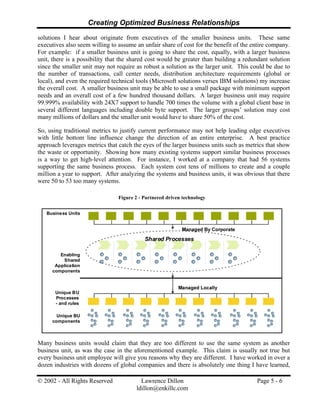This document summarizes an article about creating optimized business relationships between IT departments and business units. It discusses how business units currently drive isolated technology development, leading to redundant systems. The document advocates for a partnered approach where shared business processes across units leverage single, standardized technology components maintained centrally. Business units could then customize components for unique needs. This balances centralized efficiencies with flexibility for individual units.





